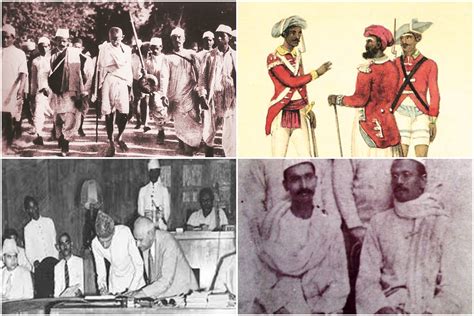The Brooks Institute of Photography, a name that resonates with excellence in the field of photography, has a rich history that spans over 70 years. Established in 1945 by Ernest Brooks, the institute has been a benchmark for professional photography education, producing some of the most talented and innovative photographers of our time. Located in Santa Barbara, California, the Brooks Institute of Photography was renowned for its comprehensive programs that covered a wide range of photography specializations, from fine art and commercial photography to photojournalism and digital media.
At its core, the Brooks Institute of Photography was dedicated to fostering creativity, technical skill, and professional readiness in its students. The curriculum was designed to provide a thorough understanding of the aesthetic, technical, and business aspects of photography, ensuring that graduates were well-equipped to succeed in the competitive world of professional photography. The institute’s faculty, comprising accomplished photographers and industry experts, played a pivotal role in mentoring students, sharing their insights, and guiding them through the intricacies of the craft.
One of the distinguishing features of the Brooks Institute of Photography was its state-of-the-art facilities and equipment. Students had access to exceptional resources, including professional studios, cutting-edge digital labs, and an extensive range of photographic equipment. This environment enabled students to explore their creativity, experiment with different techniques, and develop their unique style under the guidance of experienced professionals.
The Brooks Institute of Photography also recognized the importance of practical experience in the development of a photographer’s skills. To this end, the institute offered various opportunities for students to engage in real-world projects, internships, and workshops, where they could apply theoretical knowledge in practical settings. This blend of academic rigor and professional practice helped students build a robust portfolio, essential for launching a successful career in photography.
Despite its esteemed reputation and the quality of education it provided, the Brooks Institute of Photography ceased operations in 2016. The closure was a result of financial constraints and declining enrollment, reflective of broader challenges faced by institutions of higher education, particularly those with specialized focuses like photography.
However, the legacy of the Brooks Institute of Photography endures. Alumni of the institute continue to make significant contributions to the world of photography, pushing boundaries, and inspiring new generations of photographers. The institute’s emphasis on both the artistic and technical aspects of photography, along with its commitment to professional development, has left an indelible mark on the field.
For those interested in photography, whether as a career or a passion, understanding the history and impact of institutions like the Brooks Institute of Photography can provide valuable insights into the evolution of photographic education and the qualities that define exceptional photographers. The institute’s story serves as a testament to the power of dedicated education and the enduring influence of creative excellence.
Historical Evolution of Photography Education
The history of photography education is intricately tied to the development of photography itself. From its inception, photography has evolved from a cumbersome, chemically intensive process to a ubiquitous, digitally driven medium. Institutions like the Brooks Institute of Photography have played a crucial role in this evolution, adapting their curricula to reflect the changing landscape of photography.
Early Years of Photography Education
In the early days of photography, education was largely informal, with photographers learning through apprenticeships or self-study. As photography gained popularity, the need for formalized education grew. The first photography schools emerged in the late 19th and early 20th centuries, offering basic training in photographic techniques.
The Rise of Specialized Photography Institutions
The mid-20th century saw the establishment of specialized institutions dedicated to photography, like the Brooks Institute of Photography. These schools offered comprehensive programs that not only taught technical skills but also explored the artistic and commercial aspects of photography. This period marked a significant shift in photography education, as institutions began to recognize the medium’s potential beyond mere technical proficiency.
Digital Revolution and Contemporary Photography Education
The advent of digital technology has dramatically altered the landscape of photography education. Institutions have had to adapt quickly to incorporate digital media, software, and technologies into their curricula. Today, photography education encompasses a broad range of areas, from traditional film photography to digital image manipulation and multimedia storytelling.
The Future of Photography Education
As technology continues to evolve, the future of photography education will likely be shaped by innovations in digital media, artificial intelligence, and virtual reality. Institutions will need to be agile, incorporating new technologies and techniques into their programs while maintaining a focus on the fundamental principles of photography.
Moreover, there will be an increased emphasis on interdisciplinary approaches, combining photography with other art forms, sciences, and social sciences. This integration will enable photographers to explore new modes of expression and to address complex global issues through their work.
In conclusion, the Brooks Institute of Photography, though no longer in operation, leaves behind a legacy that underscores the importance of dedicated photography education. Its impact on the field of photography, combined with the evolving nature of photographic technology and practice, points to a future where creativity, technical skill, and innovation will continue to define the medium.
FAQ Section
What was the Brooks Institute of Photography known for?
+The Brooks Institute of Photography was renowned for its comprehensive photography programs, state-of-the-art facilities, and faculty of accomplished photographers. It provided students with a thorough education in the technical, aesthetic, and business aspects of photography.
Why did the Brooks Institute of Photography close?
+The Brooks Institute of Photography ceased operations in 2016 due to financial constraints and declining enrollment, challenges that many institutions of higher education, particularly those with specialized focuses, face.
What is the significance of the Brooks Institute of Photography in the history of photography education?
+The Brooks Institute of Photography played a significant role in the evolution of photography education, adapting its curriculum to reflect the changing landscape of photography and emphasizing both the artistic and technical aspects of the medium. Its legacy continues to inspire new generations of photographers.


